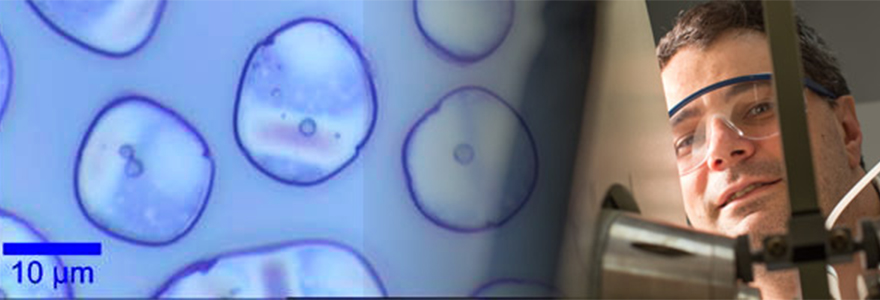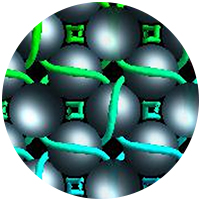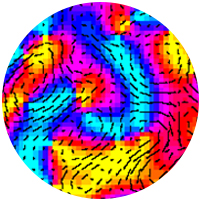Condensed Matter Physics

Experimental Condensed Matter Physics
Engineered materials, in the form of computer chips, optoelectronic devices, new polymers, and composites, are changing the world. Understanding and modifying their properties presents an exciting opportunity for physicists.
Western has an active group of faculty engaged in world-class materials research, using a comprehensive range of modern surface analytical resources, including the newly constructed Western Nanofabrication Facility.
Research Areas
- ion beam modification of materials
- photonic materials
- soft and disordered condensed matter
- biomaterials
- semiconductor thin films
- novel dielectrics
- rheology
- pattern formation
Instrumentation includes:
- Tandetron accelerator, and gas-source Van Der Graaf accelerator, for implantation and beam-based analytical techniques
- atomic force microscopy
- variable-energy positron beam for defect analysis
- focussed ion beam/scanning electron microscope
- multi-photon confocal microscope
- nanoscale patterning capability
- molecular beam epitaxy
- access to state-of-the-art time-of-flight Secondary Ion Mass Spectroscopy through Surface Science Western .
Research Faculty
- Giovanni Fanchini
- Olga Trichtchenko
- Lyudmila Goncharova
- Jeff L. Hutter
- Ian V. Mitchell (Emeritus)
Theoretical Condensed Matter Physics
Overview
 Theoretical and computational studies are conducted on the quantum properties of solids, the dynamics of complex fluids, and the interaction of light and mater in hybrid nanomaterials. Both bulk materials and artificially-structured (or engineered) materials are examined, where surface and interface effects are important. In some cases, these activities parallel those being investigated in Western’s experimental group on materials. Applications to nanotechnology and nanomedicine are also investigated.
Theoretical and computational studies are conducted on the quantum properties of solids, the dynamics of complex fluids, and the interaction of light and mater in hybrid nanomaterials. Both bulk materials and artificially-structured (or engineered) materials are examined, where surface and interface effects are important. In some cases, these activities parallel those being investigated in Western’s experimental group on materials. Applications to nanotechnology and nanomedicine are also investigated. We focus on structural, dynamic, and transport properties of solids (including metals, semiconductors, and amorphous materials) and soft materials (such as liquid crystals, polymers, and biological materials) as characterized by their optical, magnetic, vibrational, mechanical, viscoelastic, electronic and electromagnetic behaviour.
 The group consists of faculty members, occasional postdoctoral fellows, and research visitors as well as several graduate students. There are active collaborations within Western' and externally with other universities and with government and industrial research laboratories.
The group consists of faculty members, occasional postdoctoral fellows, and research visitors as well as several graduate students. There are active collaborations within Western' and externally with other universities and with government and industrial research laboratories. 
